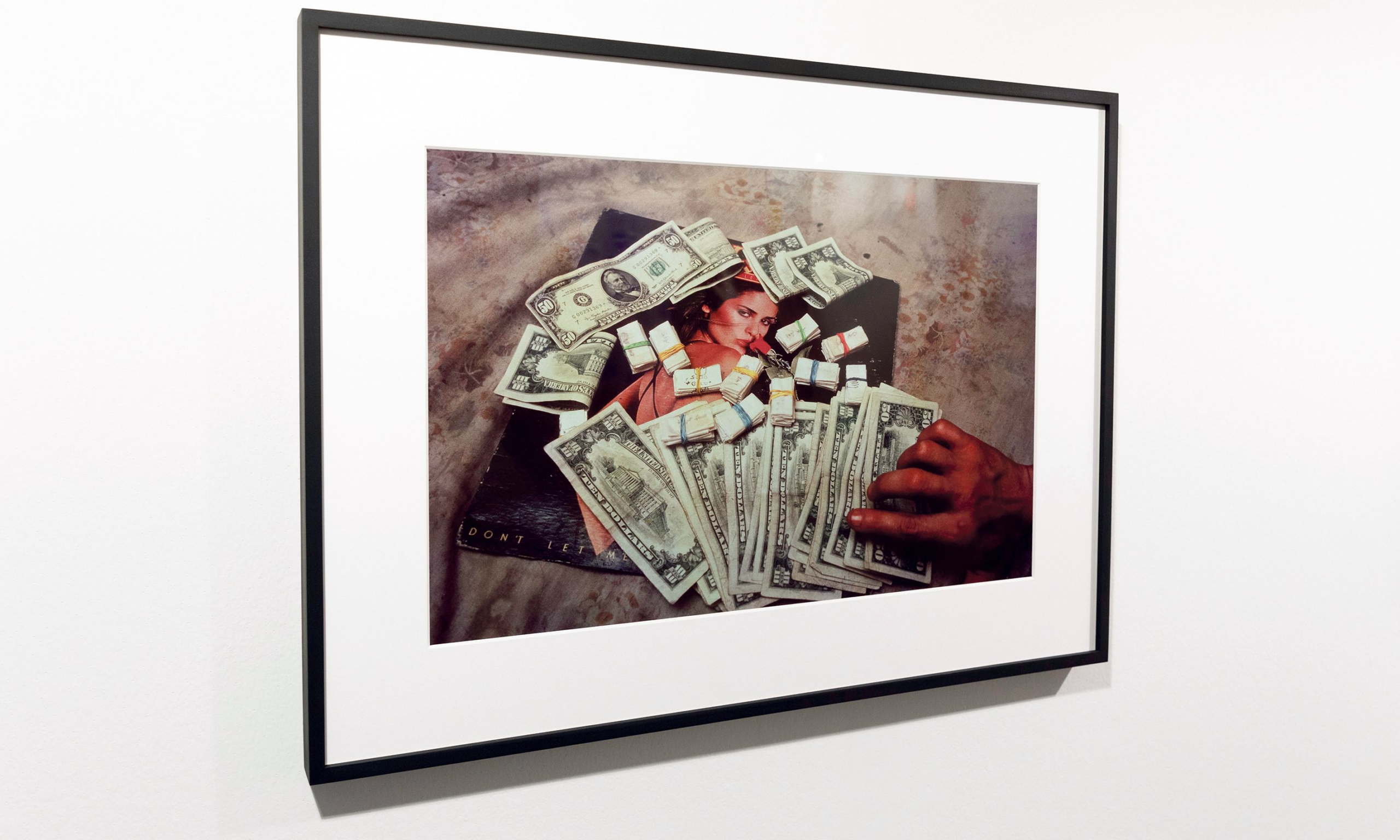Show me the money: several works at Art Basel depict money, including Joseph Rodriguez’s Sunrise, Spanish Harlem, NY 1987 Photo: David Owens
Although Switzerland is not a member of the EU, around half of Art Basel’s exhibiting galleries operate spaces there, making an impending EU directive, coming into effect on 1 January 2025, a key issue for many exhibitors. Directive 2022/542 aims to align VAT (value-added tax) rates of member states and allow them to reduce taxes for certain goods—including gallery sales of art and antiques—provided the VAT rate is 5% or more.
Despite allowing dealers to advocate for lower sales taxes on art, the announcement of the directive initially sent alarm bells ringing among art market professionals in France, which, since Brexit, has the lowest import VAT for art, at 5.5%, greatly contributing to its position as the EU’s biggest art market—7% of the global share in 2023 according to the latest UBS/Art Basel Art Market Report. This is because it imperilled a longstanding “margin scheme” that allows VAT on art sales to only be taxed on the difference in profit between two consecutive transactions of a work, rather than the full amount. French dealers avail themselves of this scheme despite it not being in full accordance with EU law.
In a coordinated effort, a number of French art dealers’ associations and other key art market figures, including Clément Delépine, the director of Art Basel Paris, last year successfully lobbied the government to not only retain the 5.5% rate on imports, but apply it across all art sales, effectively reducing the total amount of VAT paid.
“Our scheme is the most competitive in the EU. The matter is addressed and solved,” says Franck Prazan, the founder of the Paris gallery Applicat-Prazan, which is exhibiting at Art Basel. Prazan was central to achieving this outcome in December 2023.
France’s swift and coordinated response appears to have galvanised the art market sectors of other member states. The EU’s second-largest art market, Germany, is now set to reduce its overall VAT, from 19% to 7%, in line with its import VAT of 7%, its government having approved the reduction earlier this month. The country’s culture minister Claudia Roth said in a statement: “The reduced rate is an important signal, particularly in difficult times, for the art market and the cultural contribution made by galleries.”
In Italy, the EU’s third-largest art market, tax breaks could also be on the horizon. Mauro Mattei, an Italian tax adviser and art collector, says that, similarly to France, a law is being considered that could nearly halve import VAT, from 10% to 5%.
Even more significantly, talks are underway to slash VAT on secondary market sales from 22% to 5%, he says, which would be “a gamechanger for Italian galleries”. Mattei emphasises that no decision has been made yet, and it will likely come at the last minute. “Knowing the speed of Italian legislators, we will find the decision out on 31 December, one day before the EU directive comes into effect,” Mattei says.
Indeed, it is important to emphasise that in all these cases, decisions are still at the stage of government bills and are not yet legislation, points out Florian Greiner, a German tax law specialist who advises Germany’s biggest art dealers’ association, the Bundesverband Deutscher Galerien und Kunsthändler (BVDG).
This caution is perhaps necessary in light of the results of this week’s EU parliamentary elections that have seen the leading right-wing parties in France, Germany and Italy all gain significant ground, to the concern of many in the art world.
Florian Lüdde, the co-founder of the Berlin gallery ChertLüdde, also exhibiting at Art Basel, says that while changes to VAT are possible, taxes are likely low down the list of priorities for far-right parties. “What is of far greater concern is what these worrying results mean for culture in general, more than just the market,” he says.

